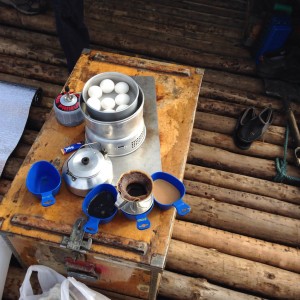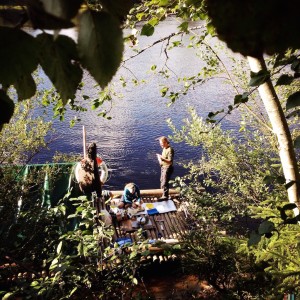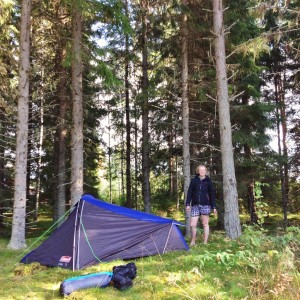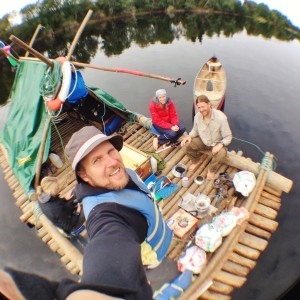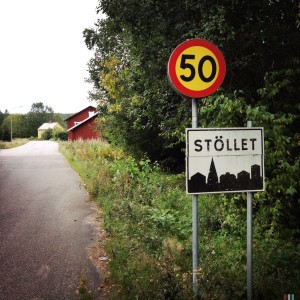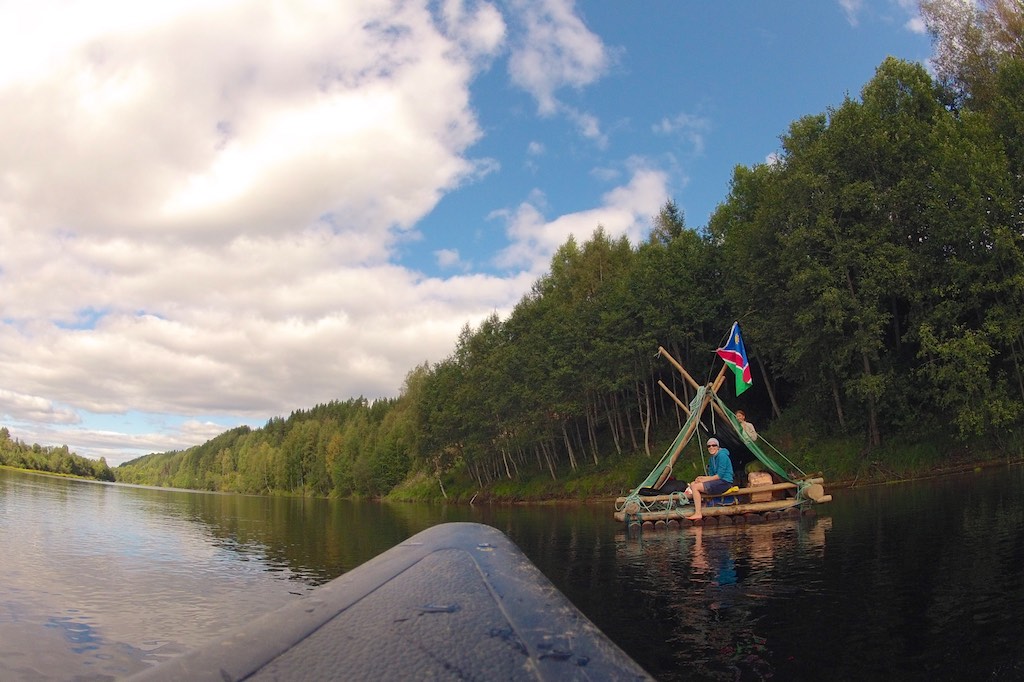
Timber-rafting on the Klarälven River, Sweden
Since a friend from Sweden years ago told us about a timber rafting trip in his native Värmland, we’ve always wanted to do it. Not many people outside of Sweden are aware of this trip and finally in the Autumn of 2014 we fulfilled the dream.
The basic idea of the trip is to build your own timber raft and float down the Klarälven River. The river catchment is a wild forestry area and years ago they used to float logs down stream for processing. These days logs are transported by road, but one company operates unique rafting trips to adventure seekers.
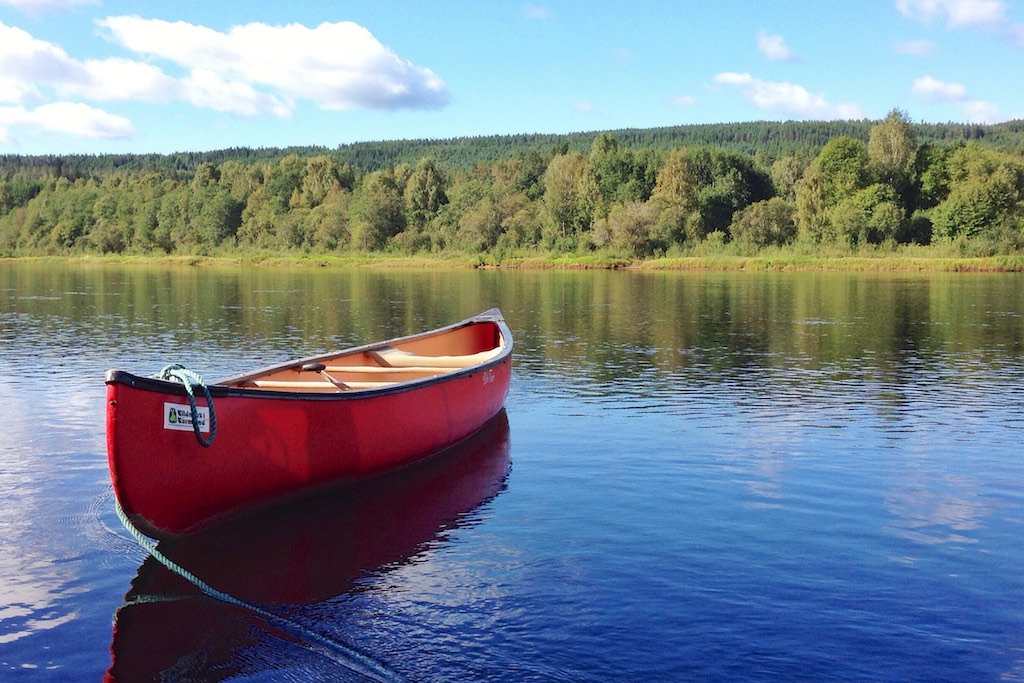
The lowdown
Once we’ve arrived at Gunnerud, a guide provided us with our gear and taught us basic raft-building skills. It included a 2-hour overview session and an opportunity to have a practice run on the various knots you need to build the raft with. We spent the first night at Gunnerud in our own tent.
The next day we travelled to our starting point at Bränas where we assembled our raft. We were provide loads of direction and support from a guide. It should take about 4 or 5 hours to build a raft, but it took us 7 hours (including a break for lunch and grocery shopping) and we only set off late in the afternoon.
For the next 6 days we floated down the river and camped wild on the banks of the Kläralven River.
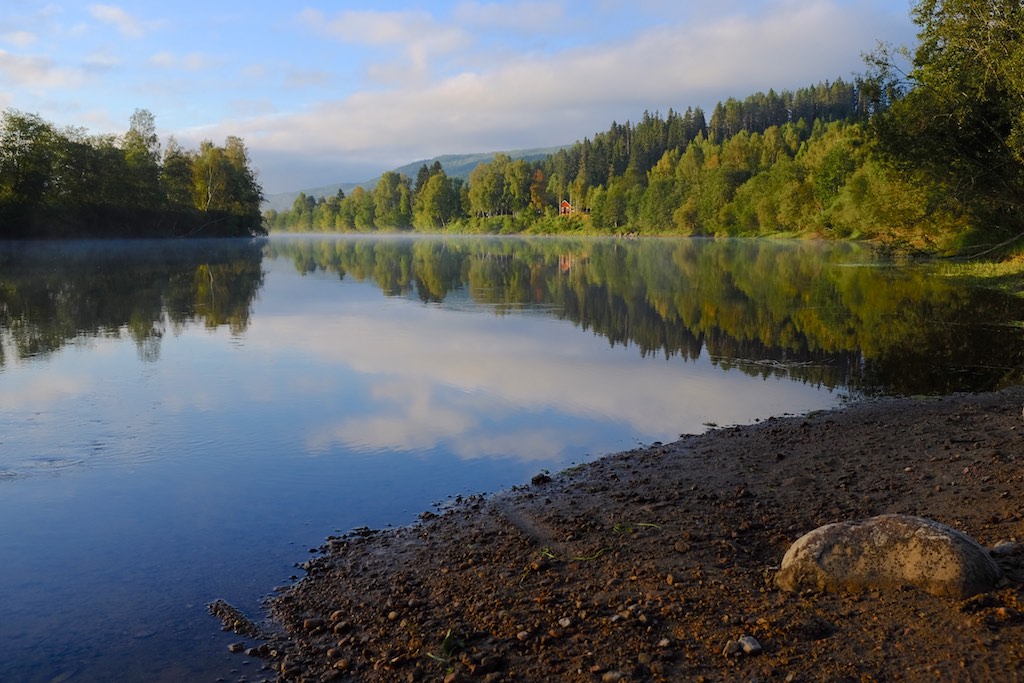
Highlights
- Wildlife. One afternoon we saw moose walking right through the river at a shallow crossing. Another evening we heard something growling around the camp – just outside the light of the fire. And just before sunset on two occasions we saw beavers curious about our raft.
- You build your own raft! It was hard work, I won’t lie, but the feeling of accomplishment once the raft is ready to cast off, is just unbeatable. A certain level of fitness was required, but our little team of four managed just fine.
- Wildcamping. In Sweden allemansrätt (freedom to roam / right of public access) allows everyone access to nature. We were allowed to camp for 24 hours on any land as long as we respected our hosts and their land. Late afternoons we started scouting (using the canoe) for a suitable campsite and the best camping spots were usually on the eastern side of the river to catch the late afternoon sun. We used the canoe to send out a landing party of two, whilst two stayed on the raft to manage the rope and steer the raft if needed.
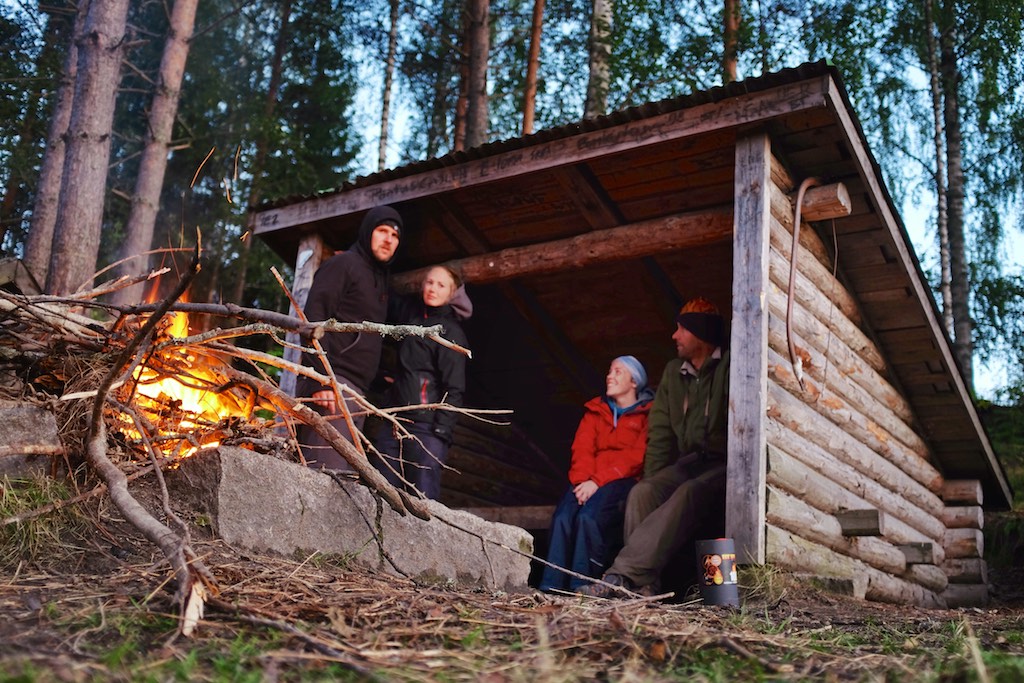
The fine print
- Mosquitos. Pick up some mosquito repellent in Sweden as the stuff we brought from the UK didn’t work.
- Digging your own toilet. Part and parcel of wild camping and they gave us good instructions on what to do in order to have the least impact on the environment. Sadly not everyone that’s gone before us followed these rules.
- Road noise. A couple of nights we had no choice, but to camp close to the road. It isn’t a major road, but it was still somewhat busy with logging trucks and traffic to the northern parts of Värmland.
- Bring a seat. We brought foam sleeping mats to sit on and I can highly recommend you do the same. It stopped splinters from the raft ending up in our backsides.
- Having to break down the raft at the end. Physically it wasn’t as hard as building the raft, but the mental challenge of breaking down your home of the last 6 days was extremely difficult and it was sad to see the logs float down the river and into the catch.

Other info
- Crew size: 2 guys and 2 girls
- Distance travelled: 45km
- Number of days: we did it in 6 nights / 7 days, but there are several options depending on how relaxed or fast you want to take it. We added a couple of days before to get there and another at the end to clean up and get ready for civilisation again.
- Cost: £283 per person which included a canoe, all the rafting equipment (logs, ropes, life ring, paddles, tarpaulin and storage boxes) and also some essentials such a first aid kit, a bucket, garbage bags, toilet paper, spade, water bottles, a map and matches. Additionally we rented kitchen equipment for £25 per person, which included a Trangia stove, stove fuel, cups, cutlery, cutting board, bottle opener, tin opener, etc. inside an additional storage crate.
- Make sure to check about transfers between the busstop and finishing point especially if you’re not traveling with your own vehicle. Sweden has a good regional bus service, but it can be tricky to line up all the various busses and flights. We travelled to Karlstad by train from Oslo (Norway) and afterwards flew on to Stockholm from Karlstad airport.
- Ensure you have food for at least the first two days – especially late in the season. Check with the guides about shop locations and opening times along the route.
- We tried hand-line fishing, but with no luck. Bring gear with you as we couldn’t buy the right equipment once we were there. Check with the guides about permits.
- We got two five liter cans for fresh water and we used the river water for washing up. We also knocked on doors to ask locals for water and they were always willing to help.

You can book through agents in the United Kingdom and other countries, but we booked through the company directly, Vildmark i Värmland. They also have excellent information on their website and don’t hesitate to get in touch with them via email. They really are a helpful bunch and respond quickly to queries.
It was an adventure of a lifetime and I can’t recommend this trip high enough!

